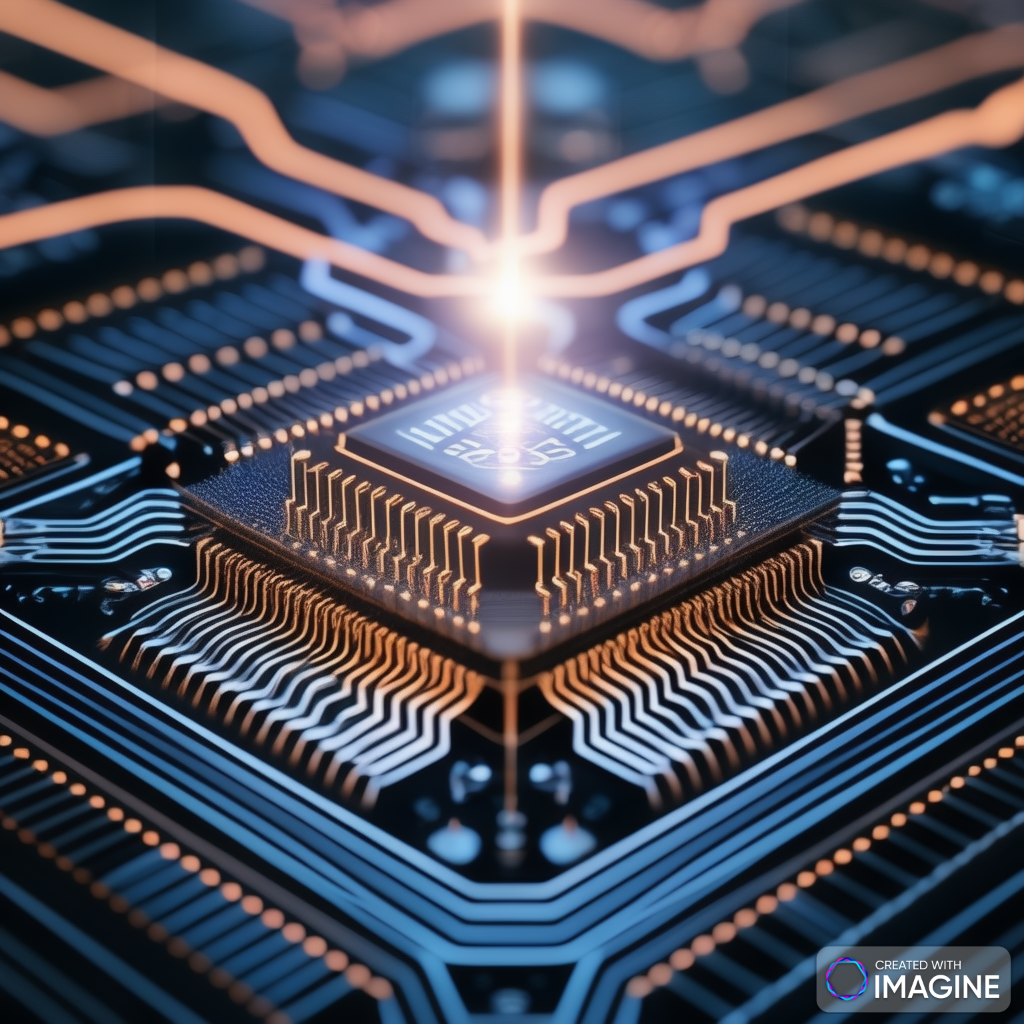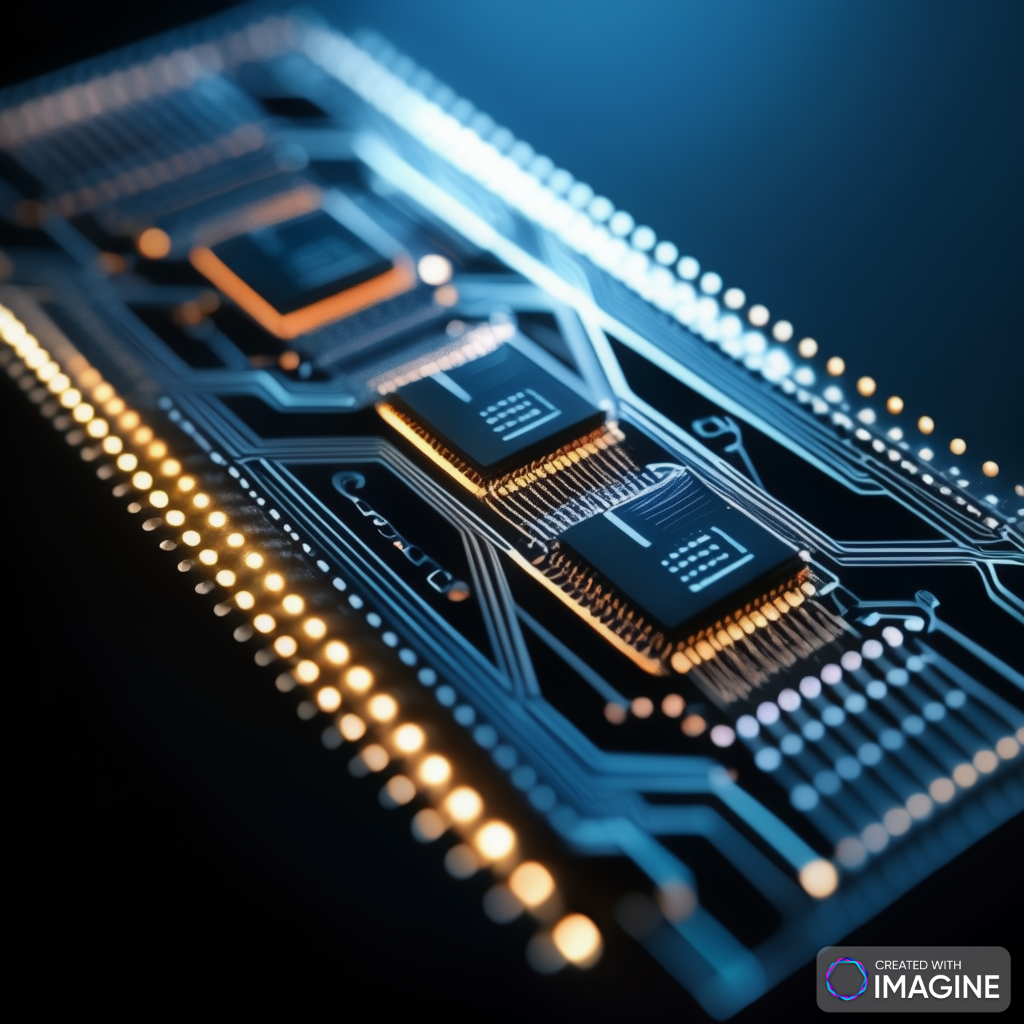Semiconductor chips, also known as integrated circuits (ICs) or microchips, are fundamental components in modern electronics, powering devices from smartphones and computers to medical equipment and automotive systems. Let’s explore the process of making semiconductor chips and their significance in today’s technology-driven world.
- Source Material: Semiconductor chips are primarily made from silicon, a widely abundant element in the Earth’s crust. Silicon is extracted from silica sand through a series of purification processes to achieve the high levels of purity required for semiconductor fabrication.
- What is a Semiconductor?: A semiconductor is a material with electrical conductivity between that of a conductor and an insulator. Common semiconductor materials include silicon, germanium, and gallium arsenide. These materials have properties that can be manipulated to control the flow of electric current, making them ideal for electronic applications.
- Manufacturing Locations: Semiconductor chips are produced in specialized facilities called semiconductor fabs or fabrication plants. These fabs are located worldwide, with significant concentrations in regions like Silicon Valley in California, USA, and East Asia (notably Taiwan, South Korea, and Japan).
- Manufacturing Process: The process of making semiconductor chips involves several key steps:
- Wafer Fabrication: A thin, circular silicon wafer serves as the substrate for chip production. The wafer undergoes a series of photolithography, etching, and doping processes to create the desired circuit patterns and structures.
- Deposition: Various materials are deposited onto the wafer’s surface using techniques such as chemical vapor deposition (CVD) or physical vapor deposition (PVD). These materials form layers that constitute different parts of the chip.
- Etching and Patterning: Unwanted portions of the deposited materials are removed through etching processes, leaving behind the desired circuit patterns and features.
- Doping: Doping involves introducing impurities into specific regions of the semiconductor to alter its electrical properties. This process is crucial for creating transistors, the building blocks of semiconductor chips.
- Packaging: Once the individual chips are fabricated on the wafer, they undergo packaging, where they are cut, tested, and encapsulated in protective casings before being integrated into electronic devices.
- Applications: Semiconductor chips are ubiquitous in modern electronics and find applications in:
- Computers, smartphones, and tablets
- Consumer electronics (TVs, gaming consoles, smartwatches)
- Automotive systems (engine control units, navigation systems)
- Medical devices (MRI machines, pacemakers)
- Industrial automation and robotics
- Communication systems (networking equipment, satellite technology)
- Evolution and Inventors: The development of
 technology has been driven by numerous inventors and researchers over several decades. Notable contributions include the invention of the transistor by William Shockley, John Bardeen, and Walter Brattain at Bell Labs in 1947, which revolutionized electronics and paved the way for semiconductor-based devices.
technology has been driven by numerous inventors and researchers over several decades. Notable contributions include the invention of the transistor by William Shockley, John Bardeen, and Walter Brattain at Bell Labs in 1947, which revolutionized electronics and paved the way for semiconductor-based devices. - Integration into Electronics: Semiconductor chips serve as the brains of electronic devices, containing millions to billions of transistors that perform various functions such as processing data, storing information, and controlling device operations. Their small size, low cost, and high reliability make them indispensable in the design of modern digital tools and equipment.
- Cleanroom Environment: Semiconductor fabrication processes require an ultra-clean environment to prevent contamination, as even tiny particles can disrupt the intricate circuitry of the chips. Cleanrooms are maintained with strict protocols for air filtration, gowning procedures, and equipment maintenance to ensure high manufacturing yields.
- Lithography Techniques: Photolithography is a key technique used to transfer intricate circuit patterns onto semiconductor wafers. Advanced lithography equipment projects light through a photomask onto a light-sensitive photoresist layer on the wafer, defining the circuit features with exceptional precision.
- Ion Implantation: Ion implantation is a critical step in semiconductor doping, where dopant ions are accelerated and implanted into the silicon substrate to alter its conductivity. Precise control over ion energy and dose is essential for achieving the desired electrical properties in different regions of the chip.
- Chemical Mechanical Polishing (CMP): CMP is employed to planarize the wafer surface after deposition and etching steps. This process ensures uniformity in layer thickness across the wafer, enhancing the reliability and performance of the fabricated chips.
- Metrology and Inspection: Metrology tools such as scanning electron microscopes (SEM) and atomic force microscopes (AFM) enable precise measurements and inspection of semiconductor structures at nanometer scales. These tools are crucial for quality control and process optimization throughout chip fabrication.
- Materials Science Innovations: Ongoing research in materials science continues to drive advancements in semiconductor fabrication. Novel materials and structures, such as high-k dielectrics and strained silicon, are developed to enhance transistor performance, reduce power consumption, and enable new functionalities in semiconductor devices.
- Packaging Technologies: The packaging of semiconductor chips involves complex assembly processes to connect the chips to external leads and encapsulate them in protective materials. Advanced packaging techniques, such as flip-chip bonding and wafer-level packaging, are employed to enhance chip performance, reliability, and miniaturization.
- Emerging Trends: Emerging trends in semiconductor manufacturing include the adoption of advanced materials (e.g., gallium nitride, silicon carbide) for power electronics, the development of 3D integration techniques for stacking multiple chips vertically, and the exploration of novel computing paradigms such as quantum computing and neuromorphic computing.
- Environmental Impact: Semiconductor manufacturing processes consume significant energy and water resources and generate waste materials that pose environmental challenges. Efforts are underway to develop sustainable manufacturing practices, such as recycling semiconductor materials and implementing energy-efficient production technologies, to mitigate the environmental footprint of the semiconductor industry.
- Global Supply Chain: The semiconductor industry operates within a complex global supply chain, with raw materials, equipment, and expertise sourced from various regions worldwide. Geopolitical factors, trade policies, and market dynamics can impact semiconductor manufacturing and supply chain resilience, influencing the availability and pricing of semiconductor products.
- Research Collaboration: Collaboration between industry, academia, and government institutions drives innovation in semiconductor technology. Research consortia, joint development programs, and public-private partnerships facilitate knowledge exchange, technology transfer, and pre-competitive research initiatives to address industry challenges and foster technological advancements in semiconductor fabrication.
- These additional points offer a deeper understanding of the intricacies involved in semiconductor manufacturing and highlight ongoing efforts to advance the field while addressing environmental, economic, and societal considerations.
- Let’s delve deeper into the process of making semiconductor chips and their implementation in digital and electronic devices, along with the science, research, and engineering behind this transformative technology.
- Crystal Growth: The process begins with the growth of high-purity silicon crystals. These crystals are grown using the Czochralski method or the Float-Zone method, where silicon is melted and slowly cooled to form large cylindrical ingots.
- Wafer Preparation: The silicon ingots are sliced into thin, circular wafers using diamond saws. These wafers undergo extensive cleaning and polishing to remove surface defects and contaminants.
- Doping: Dopants such as phosphorus or boron are introduced into the silicon wafer to alter its electrical properties. This process, known as doping, creates regions of n-type and p-type conductivity, essential for forming transistors and other semiconductor devices.
- Photolithography: A series of photolithography steps are employed to define the intricate patterns of the semiconductor circuitry on the wafer. A photoresist material is applied to the wafer surface, exposed to ultraviolet light through a photomask, and then developed to transfer the desired patterns onto the wafer.
- Etching: Chemical or plasma etching is used to selectively remove material from the wafer according to the defined patterns. This step creates the various features and structures of the semiconductor devices, such as transistors, interconnects, and contact points.
- Deposition: Thin films of conductive, insulating, and semiconducting materials are deposited onto the wafer surface using techniques like chemical vapor deposition (CVD) or physical vapor deposition (PVD). These materials form the different layers and components of the semiconductor devices.
- Ion Implantation: Ion implantation is used to precisely control the doping levels and distribution within the semiconductor wafer. Dopant ions are accelerated and implanted into the wafer’s surface to create the desired electrical properties in specific regions.
- Annealing: The wafer undergoes annealing processes to activate dopants, repair crystal defects, and improve the electrical characteristics of the semiconductor materials. This step typically involves heating the wafer to high temperatures in a controlled atmosphere.
- Testing and Inspection: Each wafer undergoes rigorous testing and inspection to ensure the quality and functionality of the fabricated semiconductor devices. Automated test equipment checks for defects, electrical performance, and adherence to design specifications.
- Packaging: Once the individual semiconductor devices are fabricated on the wafer, they are cut and separated into individual chips. These chips are then mounted onto packages, encapsulated in protective materials, and interconnected with external leads or pins.
- Assembly and Testing: The packaged semiconductor chips are assembled onto printed circuit boards (PCBs) along with other electronic components. The assembled PCBs undergo further testing and validation to ensure proper functionality and reliability.
- Integration into Devices: Finally, the assembled PCBs are integrated into various electronic devices, ranging from smartphones and computers to automotive systems and IoT devices. Semiconductor chips serve as the core components, performing essential functions such as processing, memory storage, and control.
- The science and research behind semiconductor technology encompass a wide range of disciplines, including materials science, physics, chemistry, and electrical engineering. Researchers continuously explore new materials, fabrication techniques, and device architectures to enhance semiconductor performance, increase device density, and reduce power consumption. Advanced computational simulations, experimental studies, and collaborative research efforts drive innovation and push the boundaries of semiconductor technology forward.
- In summary, the journey from raw silicon wafers to fully functional semiconductor devices involves a complex series of steps, each requiring precision, expertise, and innovation. Semiconductor technology has transformed the world of electronics, enabling the development of powerful, energy-efficient devices that have become indispensable in our daily lives.
In summary, semiconductor chips are marvels of modern engineering, enabling the functionality and performance of the electronic devices we rely on daily. From their humble beginnings in research laboratories to the global manufacturing infrastructure supporting their production, semiconductor technology continues to drive innovation and shape the future of technology.







